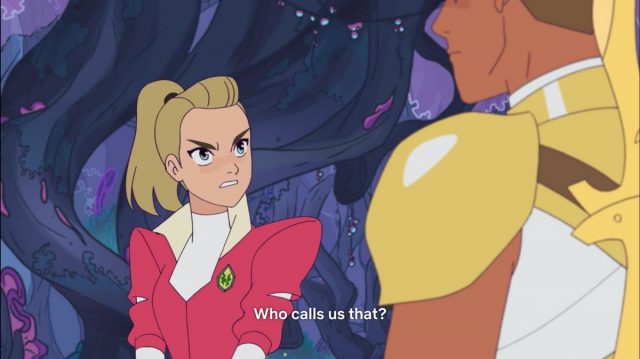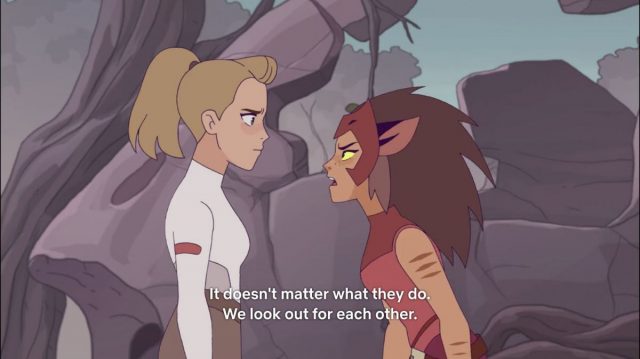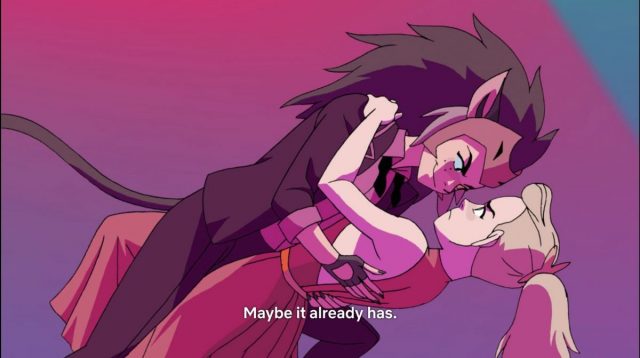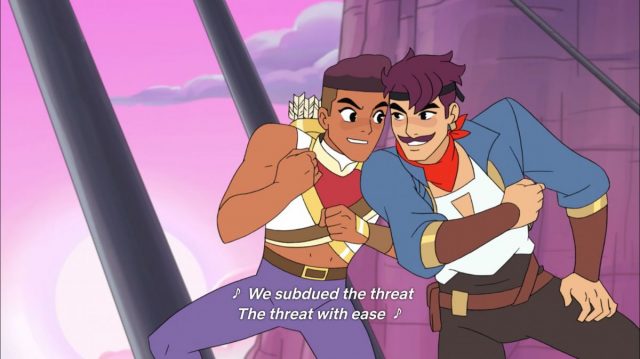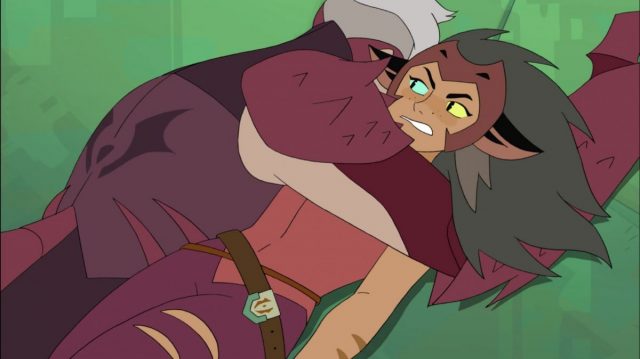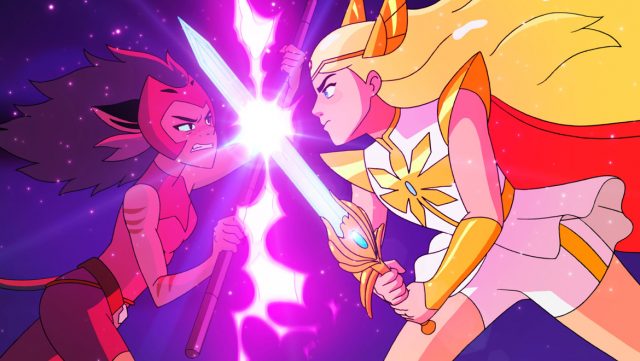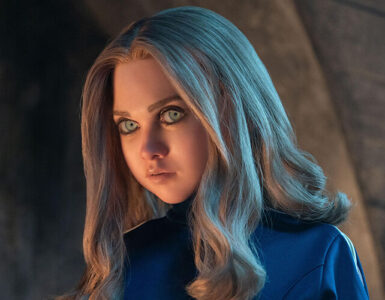All hail She-Ra, the new Princess of Tumblr!
Netflix and Dreamworks Animation’s latest collaboration (After the Voltron animated reboot) checks off everything on a Tumblr wishlist, namely ✓female empowerment, ✓body positivity, ✓racial diversity, and ✓queer representation. And for good reason – it’s a fun, well-written attempt on a remade classic.
Like the original, then titled She-Ra: Princess of Power, the new She-Ra and the Princesses of Power follows Adora on her journey to discovering her true destiny as She-Ra. Raised by the Evil Horde (“Who calls us that?!”), she stumbles across a magical, glowing sword in the Whispering Woods, experiences a cyber-Lady of the Lake moment and decides to join the Rebellion.
Unlike the original, her twin brother He-Man is nowhere in sight. Adora certainly needs no man to rescue/mansplain things to her but while she can manage fine on her own, it doesn’t mean she hesitates to accept help from her male companions.
The story gets real quickly from the get-go. Adora chooses, a little too quickly, to believe in her sword-vision and abandons her BFF/sister/potential lover interest Catra. This tag-of-war between is the backbone of the first season with the Adora valiantly trying to draw Catra to the bright side of the moon, and Catra trying to understand why Adora would abandon her at all.
Their heroine/(forsaken) sidekick relationship is best exampled in Princess Prom—where Catra and Adora share an intense dance—and in Promise where their history is revealed. Adora’s naivety contrasts strongly against Catra’s cynical nature, and they play off each other well throughout the season.
She-Ra is all about relationships; between mother and daughter (Angella and Glimmer), budding romances (Glimmer and Bow), and even classic Japanese tsundere affection (Mermista and Sea Hawk).
So it’s nice to see how naturally and subtly the series handles queer relationships. Apart from Netossa and Spinerella’s sweet connection, we’re also treated to (over level 9,000) romantic tension between Catra and Adora, along with Scropia’s adorably one-sided adoration of Catra.
It’s said that Bow has two fathers. Hopefully they’ll make an appearance in season 2. The series doesn’t draw unnecessary attention to these relationships by creating scenes that specifically call them out. Instead the writers quietly slide them in where they fit.
The series suffers a little pacing problem due to the Princess of the Week trope in the middle of the season. While the individual Princesses have fun personalities, their stories are mildly engaging at best. Unfortunately due to the 13-episode run, there’s hardly any time to develop any of the other Princesses characters, with two of them literally being shoo-ed in in episode 13.
But from the 20-odd minutes we’re given to get to know the “side” Princesses, it’s a decent attempt. Unlike the original, each of the Princesses are (almost) fully realised characters with diverse looks and characters. Some are curvy, some are tall, some are short and they come in all shades and colours, literally! Hopefully we’ll get to see more of their individual stories in the next season(s).
It’s an empowering series for girls especially, as its shows everyone that you don’t have to fit into societal norms to be who you want to be, and love yourself for it.
The show only has two male heroes, and really, they’re all it needs. They’re great examples of how male characters can support strong women, show their emotions and feel their oats without being seen as ‘weak’ or emasculated.
Bow is a fantastic second fiddle to Glimmer and She-Ra. He’s OK with not being in charge, confident in his own skills and stands bow-to-sword/sparkles with his magical gal pals and isn’t afraid to express himself. Sea Hawk on the other hand, is almost overconfident, fun, self-aware and has a passion for professing his love shamelessly and cheesily to Mermista.
But the villains of the series are the real heroes.
Catra is a well-rounded villain that grows from indifferent subordinate to manipulative schemer through the series. She waivers between being a loyal and hurt, ambitious and supportive, kind and cold and it’s heart wrenching to watch her fall. As the series progresses you can see how Adora’s desperate attempts to ‘save’ her drives her further away, and its clear it hurts them both.
Under Shadow Weaver’s tutelage and abuse, Catra’s primary concern was self-preservation and supporting Adora. It’s ultimately Adora’s betrayal that turns Catra into a full fledged villain, showing it’s the ones that you love that hurt you the most. #relatable
A huge story theme for She-Ra villains is about not fitting in—something most geeks can easily connect with. It’s almost ironic for a series that touts inclusivity to feature characters that are shunned because they are different or hard to understand, which are exactly what Scoripa and Entrapta experience. Their rejection by the Princess society adds another layer of depth to the storytelling and really gets you to feel for them. Scropia is a villainess by circumstance and Entrapta got trapped by Catra’s manipulation of her abandonment (“Fright Zone log hour 45…that’s too many hours…They’re not coming back for me.”), a feeling Catra is very familiar with.
While She-Ra‘s animation is just average, the series has fantastic design. The Princesses are dressed in colourful clothes that are practical, and show their personalities. She-Ra’s costume is updated with tights, making it incredibly reasonable for battle. In a fun twist, it’s a male character’s costume that is impractical instead.
This remake successfully breathes new life into the 30-year-old franchise. It is filled with modern quirks that will appeal to and amuse old and new fans alike. Hopefully the series will follow in the footsteps of Steven’s Universe and Avatar TLAB and give fans the stories they deserve.
Fun Fact: She-Ra was originally created and developed by Larry DiTillio and J. Michael Straczynski, the great minds behind Babylon 5.
She-Ra and the Princesses of Power is now streaming on Netflix.
GEEK REVIEW SCORE
Summary
This Netflix remake is a magical retelling of a retro class. It’s the modern feminist story that everyone needs.
Overall
8.3/10-
Animation - 7/10
7/10
-
Story - 8/10
8/10
-
Characterisation - 9/10
9/10
-
Geek Satisfaction - 9/10
9/10
User Review
( votes)Victoria is a consummate dragon trainer fueled by ice cream and cake. A huge cartoon, tokusatsu, bronze and modern age comics fan, she aims to one day use her cosplay skills to become a spy like Sydney Bistrow.


